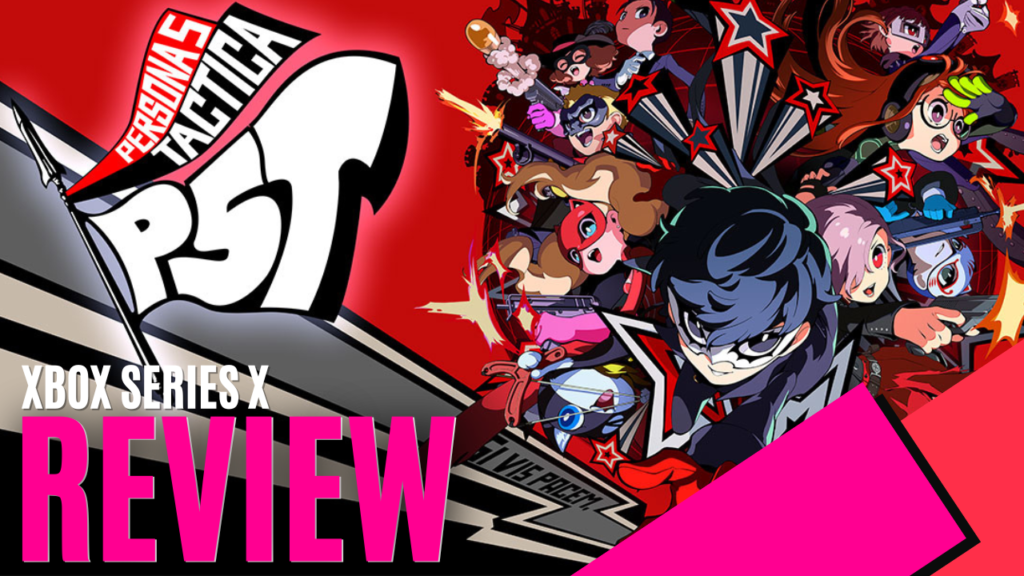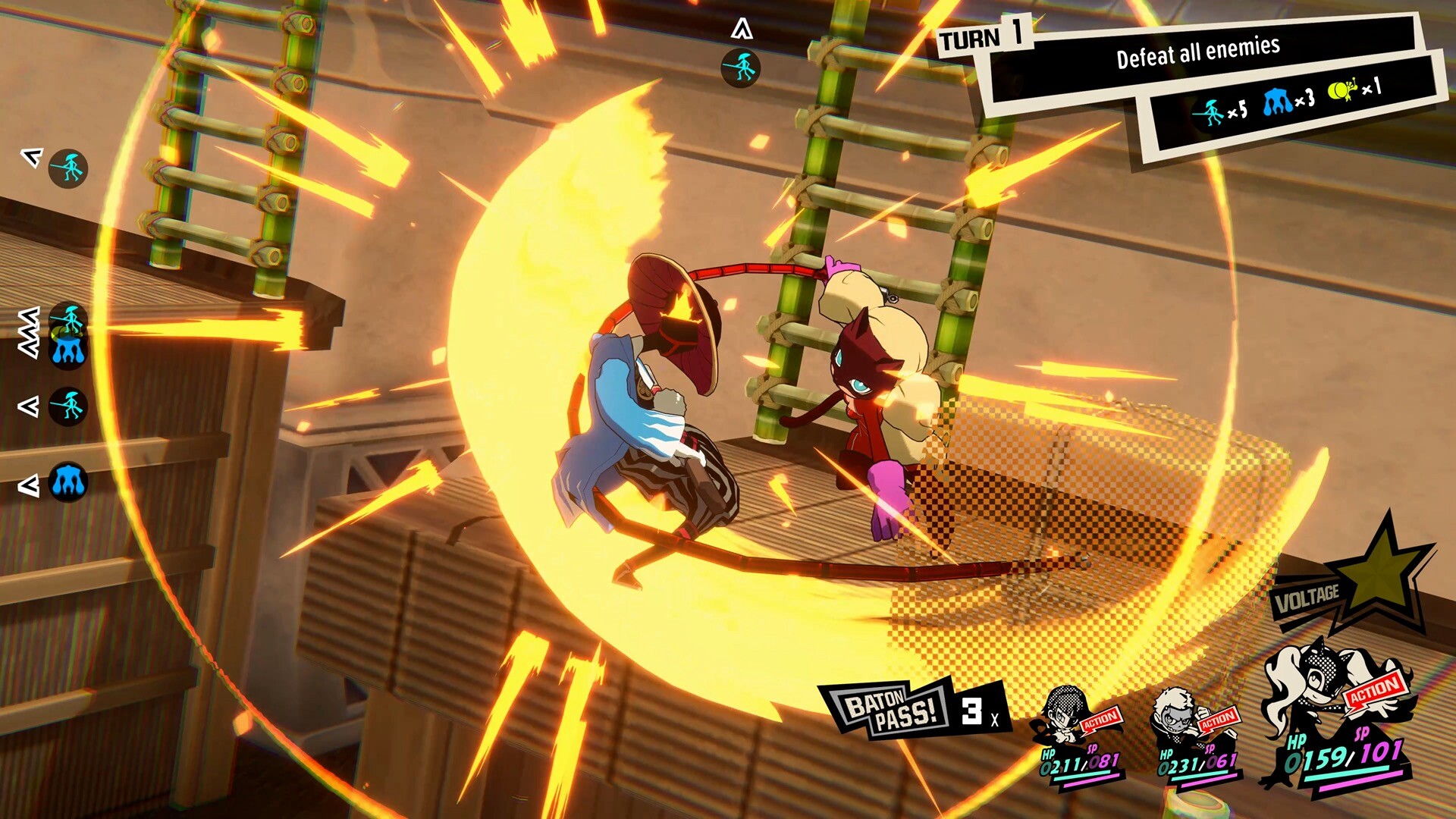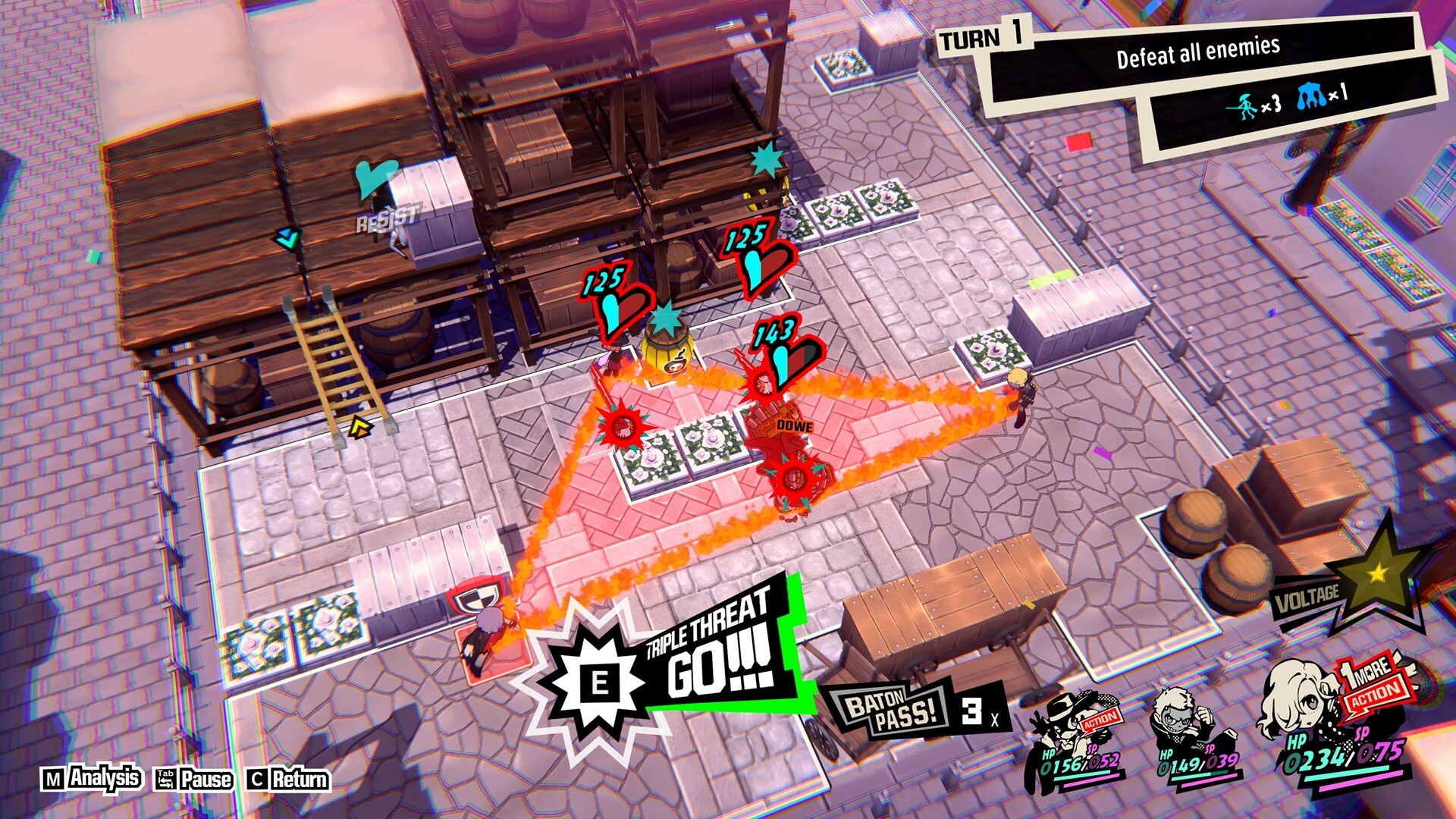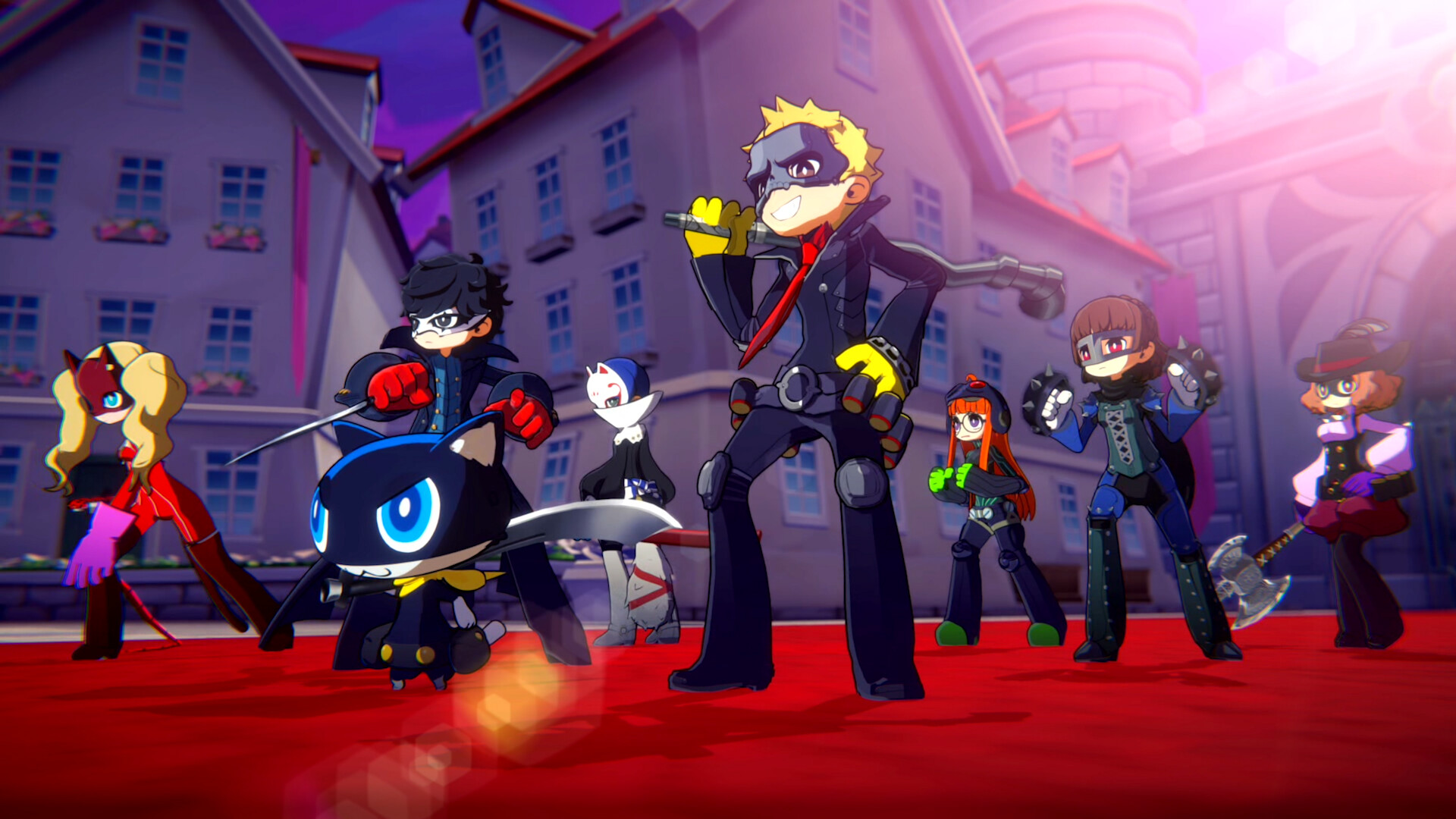
I’ve never really been a huge fan of anime, which may come as a shock to some given how badly I want to go and visit Japan. Sure, I watched Pokémon and Dragonball Z every morning before school on Cheez TV. I even watched a bit of Sailor Moon, but I’ve never gone out of my way to find a new series, and the few that that I have watched I never completed, so you can imagine the shock I felt when Persona 5 Tactica, developed by P Studio and published by SEGA, was given to me for review.
After an initial scene where two shadowy characters are discussing their evil plans played out, I was finally introduced to our protagonists. The group of high school-aged teens and an anthropomorphic cat had met up in their favourite coffee shop, the Cafe LeBlanc, discussing their plans and how they could still keep in touch and be friends no matter how far apart they lived, and as they prepared to go their separate ways, a mysterious force creates a strange phenomenon within the café. Coffee cups and various other utensils fall to the ground, freezing in place just before making contact, and a mysterious cogged symbol floats in the doorway.
Hypothesizing about what it could mean, they come to the conclusion that they are still in their own metaverse as they haven’t transformed into their personas, but as they step outside, they find themselves transformed and face to face with strange and hostile beings in an alternate universe. Heavily inspired by Medieval Europe, the beings level their muskets at our heroes while singing praises of their glorious queen, and after spending what felt like an eternity scrolling through dialogue and cutscenes, we finally get to play a short tutorial.
Not only does the tutorial show us how to take part in combat, but it helps to deliver the actual story through gameplay rather than the previous and lengthy cutscenes, although there were plenty more of those to come. Being a turned-based RPG, the combat controls are really straightforward, in that you use an analogue stick to move your character within the confines of their movement range, taking cover behind walls or barricades, and depending on where you are in relation to the enemy, the available attack buttons will appear next to your character.

A couple of quick taps to confirm, and a very short in-game scene will play out. Once your party of three has completed their moves and attacks, the enemy has their turn following the same steps, continuing until one party or the other is defeated, and if you’re successful, a typical JRPG end-screen will display how well you did, displaying your overall score in relation to in-fight challenges, as well as any gear and XP you may have earned.
The tutorial comes to an end with all but two of our protagonists falling victim to the mind-controlling powers of our tyrannical and thick-thighed fan-servicing antagonist, Queen Marie, who proceeds to drag our two remaining Phantom Thieves of Hearts members behind her custom-made, giant spike-tracked car, emblazoned with “Just Married” across the panels, and it is here that we meet Erina, the leader of the Rebel Corps, a group dedicated to ending the Queen’s malicious attempts to organise the perfect wedding.
This metaverses’ Café LeBlanc is identical to the one from which our heroes frequent, acting as the headquarters for the Rebel Corps, and it is here that we can choose the next mission, talk to our comrades, and re-equip and upgrade the partied abilities. While we only start out with our two survivors and Erina, we will unlock more as the story progresses and we free our friends from the evil bride-to-be’s control, and from here, we can decide which three characters will take part in the next mission.
Each character can be upgraded in a number of ways by using a variety of weapons and equipment, swapping out Persona powers, and choosing options from within their skill trees, with choices unlocked as your characters level up.
These can be anything from increasing the damage of the character’s chosen Persona, new skills, and party-wide buffs, or passive abilities for the chosen character, such as an increase to their movement speed or extra range for their weapons.

These are unlocked with Growth Points, or GP for short, which are earned by each character as you complete missions. At first, I was a little concerned by the pricing of these skills – the first time I saw that I had earned any, it advised that I had received 2GP, and the first skill would cost me 10. Fortunately, the two that I had earned appeared to be communal points, as each character had 10 points in their own pool, so I was able to purchase a skill for each.
When you’re not directly in combat, you’re typically watching cut-scenes, as mentioned before, and I felt like I was clicking through these more than I was playing the game. Depending on where you’re at, cut-scenes will play out a little like a comic, or manga for the weebs out there. A static background sets the scene, with character avatars popping in and out as they deliver their dialogue. During this style of cutscene, characters are only very minimally animated. Their mouths move as they talk, occasionally shifting to a different stance, and their emotions are enhanced by using the frustrated lines or confused squiggles so commonly associated with anime and manga.
Other cutscenes are played out using in-game avatars, which are basically the same anime-style characters wrapped around a 3D shell, however, these are more animated as they use the in-fight avatars, which leads us into the graphics. As you’ve already guessed, everything appears to be taken directly from anime, with the main focus being on our rag-tag group of protagonists. Each character is unique in their design, with their Persona outfits masterfully representing their alternate persona.
Special abilities and attacks featured unique animations, though they didn’t feel as impactful as they probably deserved, and while the areas where combat takes place are nicely detailed they were often small, and with an abundance of cover, they do tend to feel a little cramped as you try to manoeuvre your fighters and attempt to gain an advantage. The awkward camera angles also didn’t really help when trying to position your selected fighter, and while there were controls to try and help this, they really didn’t seem to respond too well. Queen Marie and other mini-bosses are equally unique in their design, but the typical enemy mobs, known as Legionnaires, felt very cut-and-paste.

Fortunately, these were fairly easy to dispatch, either by positioning yourself so that a character’s Persona could attack multiple in one blast, or by knocking them out of cover to make use of the “One More” mechanic. By attacking an enemy who isn’t in cover, you’ll knock them down and earn “One More” turn for that character, which as the name suggests, allows you to take control of that character once more, moving once again, and making another attack. I was a little surprised that a character’s Persona ability could be used multiple times, but it uses a mana-like system that slowly regenerates as the battle progresses, and this can be further enhanced with the previously mentioned skill tree.
Before making it to the main menu, the initial opening scene gave me high hopes for the music in Persona 5 Tactica. It started off with the typical anime style – pumping tunes punctuated by splashes of the characters appearing on the screen, but then it happened. The vocals of the theme song felt, at least in my opinion, very out of place, and as much as I tried to continue watching it, I had to skip.
While fighting the Legionnaires, the music wasn’t as exciting, but the sound effects helped to combat the disappointment, and the music became more intense as we took on more powerful enemies. The disappointment I felt was extinguished once the cutscenes began, with expertly voiced character dialogue, and once again, in true anime fashion, lines were delivered with the level of emotion that only anime ever seems to deliver successfully, but as I mentioned earlier, these seemed to go on longer than the actual gameplay, and as perfect as they were, I wanted to actually play the game.
As a game that focuses heavily on its story over gameplay, Persona 5 Tactica excels, and I can see why this could be appealing to many, but it’s not for me. The overarching story of a self-centred queen using mind control on her subjects to build her dream wedding is an interesting one, albeit a strange one, and the turn-based combat system is simple and easy to learn, perfect if you’re looking to get into the series. With graphics pulled straight from an anime series and expertly voiced characters, fans will feel right at home.

The Good
- An interesting, albeit strange story
- Cute anime graphics and themes
- Emotionally delivered dialogue
- Easy to learn gameplay and controls
The Bad
- Cutscenes felt like that went for too long
- Musical choices felt inconsistent
- Gameplay felt like a side activity








